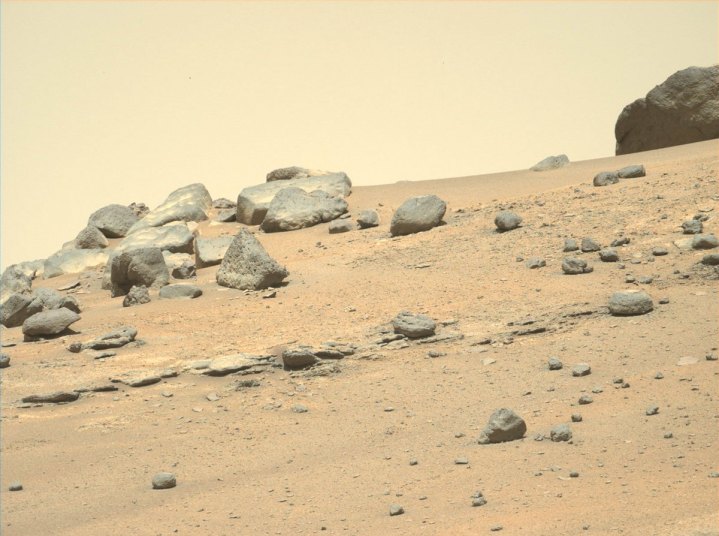
NASA’s Perseverance rover may not have succeeded in its first attempt to collect a sample from the surface of Mars, but soon it will try again, hopefully with a more cooperative rock this time.
Perseverance made its first sampling attempt on Friday, August 6, and at first, everything seemed to go as planned. However, when the rover went to measure the rock in its sample tube, it found nothing inside. The rover team got to work figuring out why the rover had failed to collect a sample, and preliminary investigations suggested that the problem was with the type of rock they were trying to sample.
Now, further investigation confirms that this was indeed the problem, as the rock was too powdery to produce a neat core that could be sealed away. Jennifer Trosper, Project Manager at NASA’s Jet Propulsion Laboratory, wrote in a blog post that the sampling system worked as planned, but the rock was so powdery that it fell apart when the rover tried to take a core of it.
“Our team has been working hard over the last 12 days to both ensure we have adequately assessed the data from the first coring attempt and also developed a solid plan forward,” Trosper wrote. “After further review of the engineering and imaging data, our final conclusion is the same as our initial assessment: The rock simply wasn’t our kind of rock.”
In a follow-up post, project scientist Kenneth Farley wrote more about the troublesome Roubion area where they tried to grab the first sample from. They attempted to sample one of the flat rocks nicknamed “paver stones,” which have been found throughout the Jezero crater so far. These rocks are important, as this area is thought to host some of the oldest rocks in the crater, which could help to date the impact that formed it more accurately.
The team intends to try to sample another paver stone, and they are optimistic that another target will be more successful. They will roll the rover on over to the Citadelle region, currently just 150 meters away, where they’ll find boulders that will be another target for a further sampling attempt.
According to Farley, the second attempt to collect a sample should happen within the next few weeks: “I expect we’ll pick out a target on one of these boulders and begin the planning for our next coring activity next week, with our next sampling attempt around the end of the month,” he wrote.



